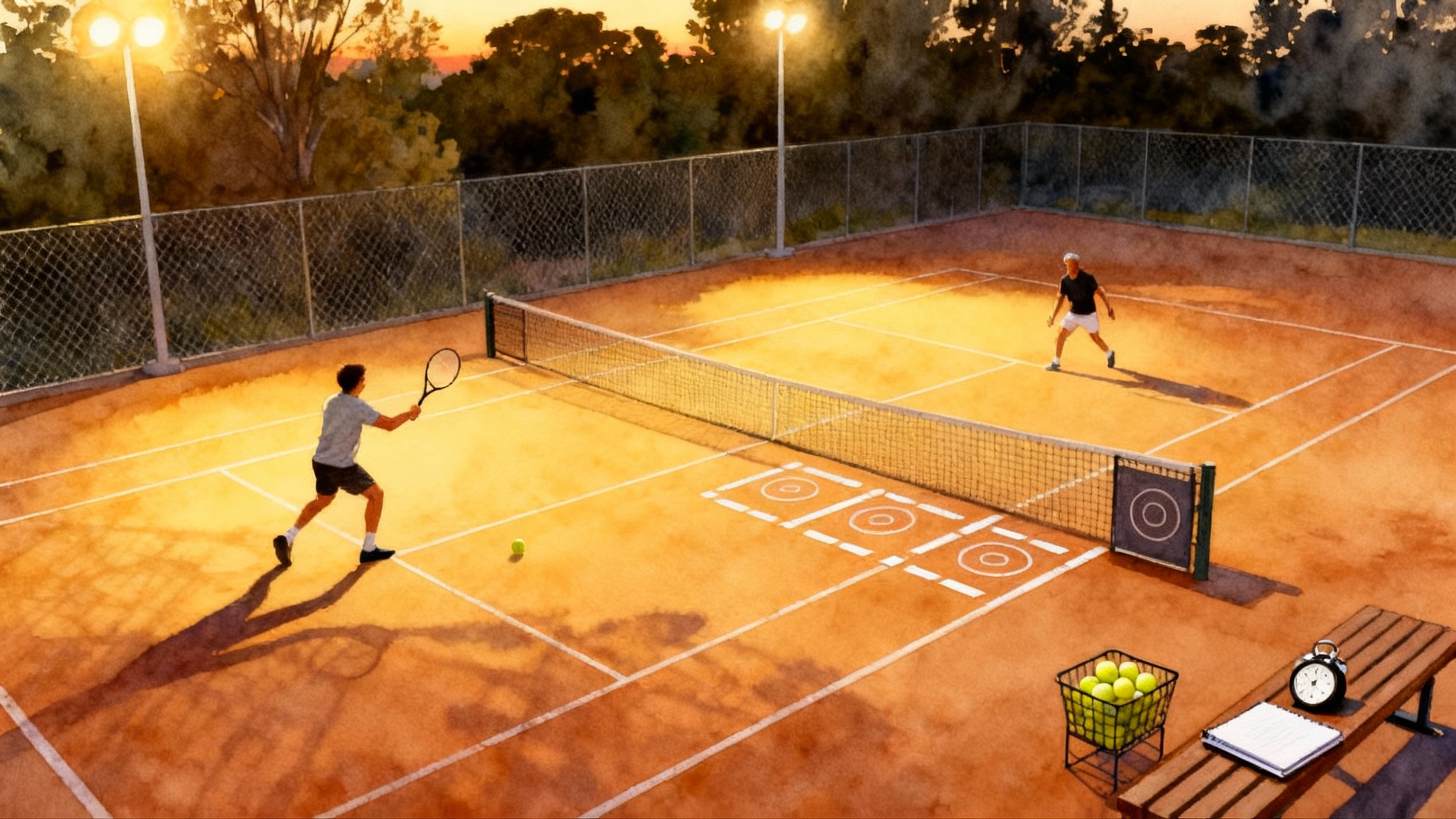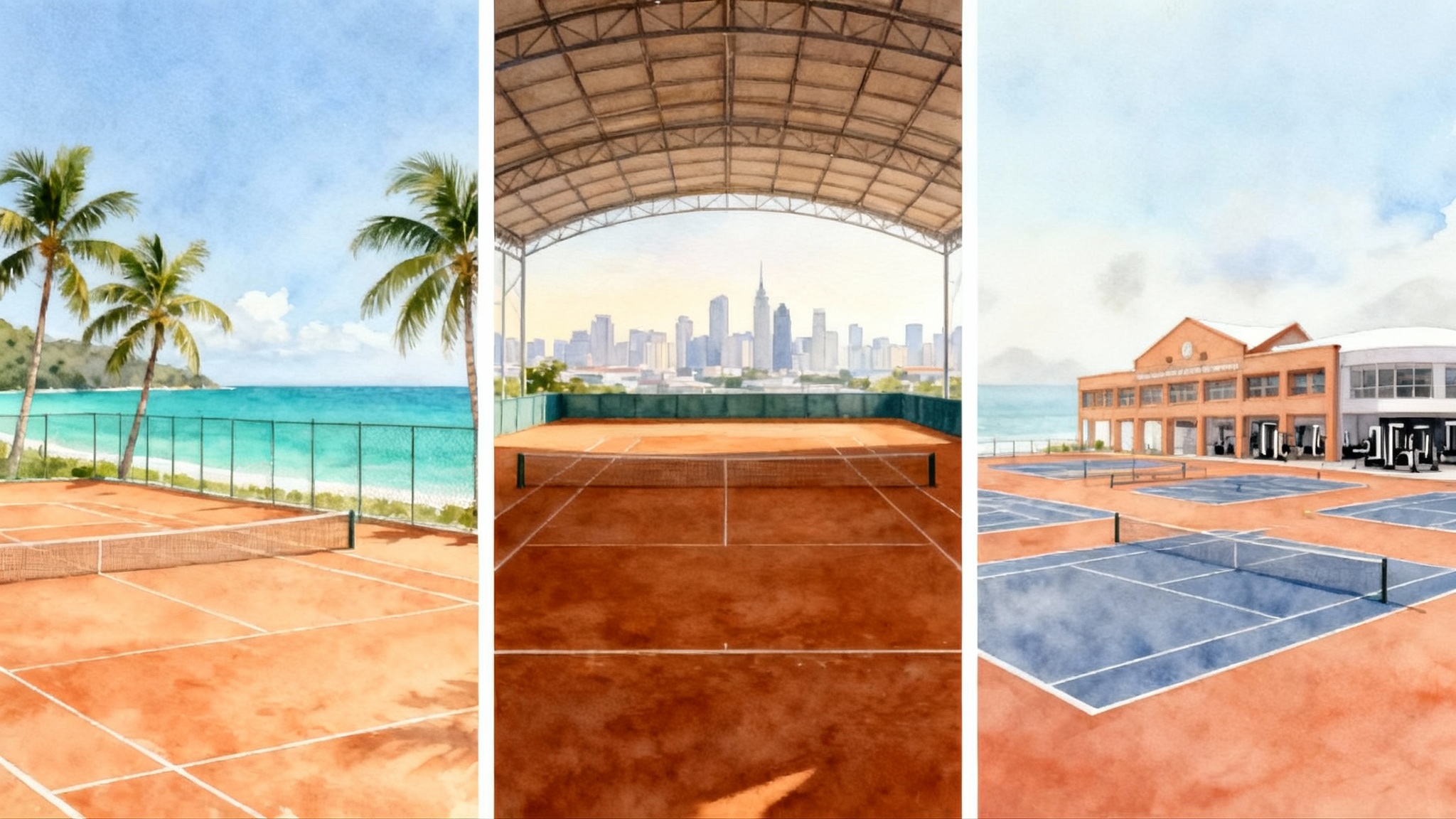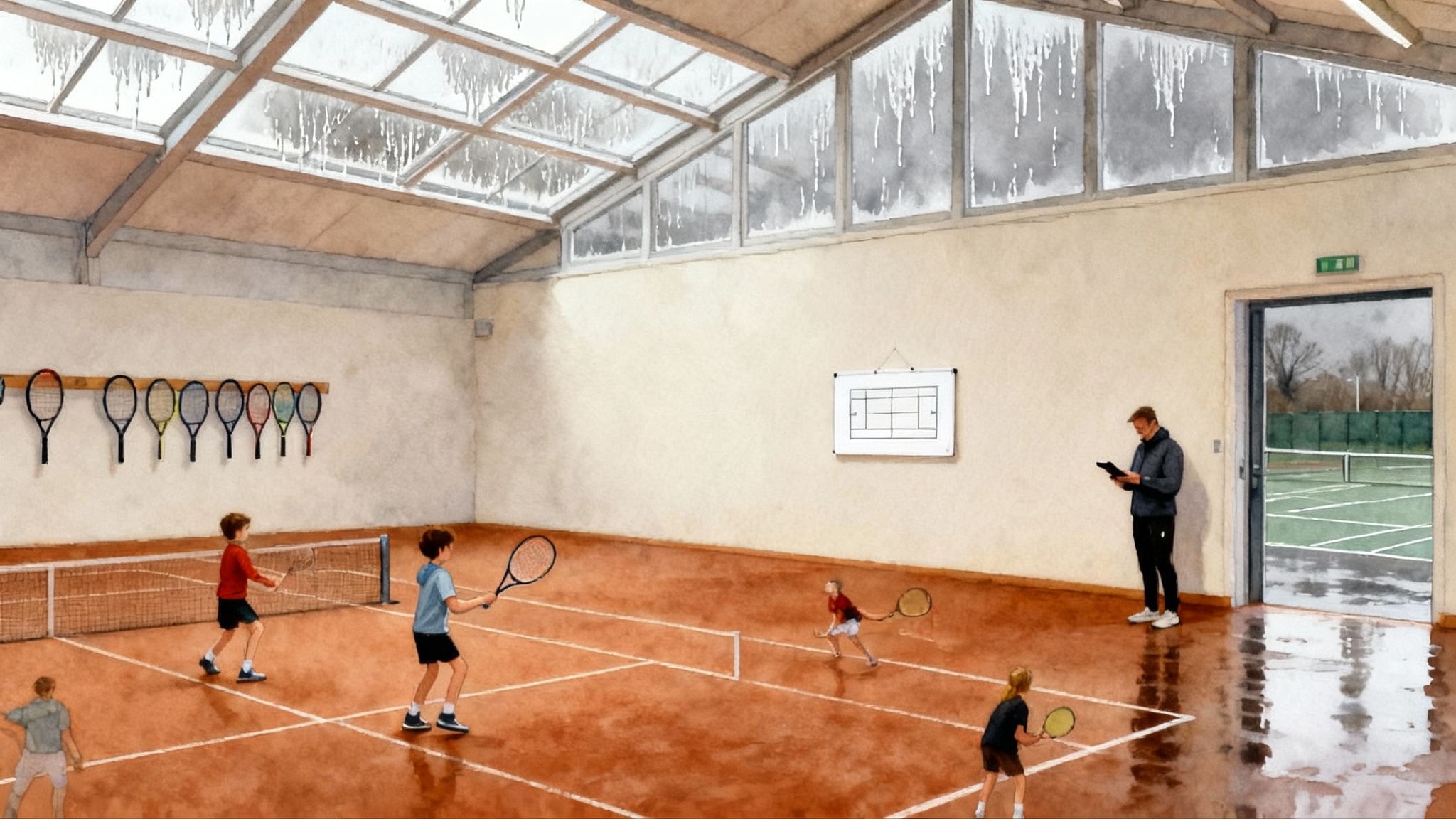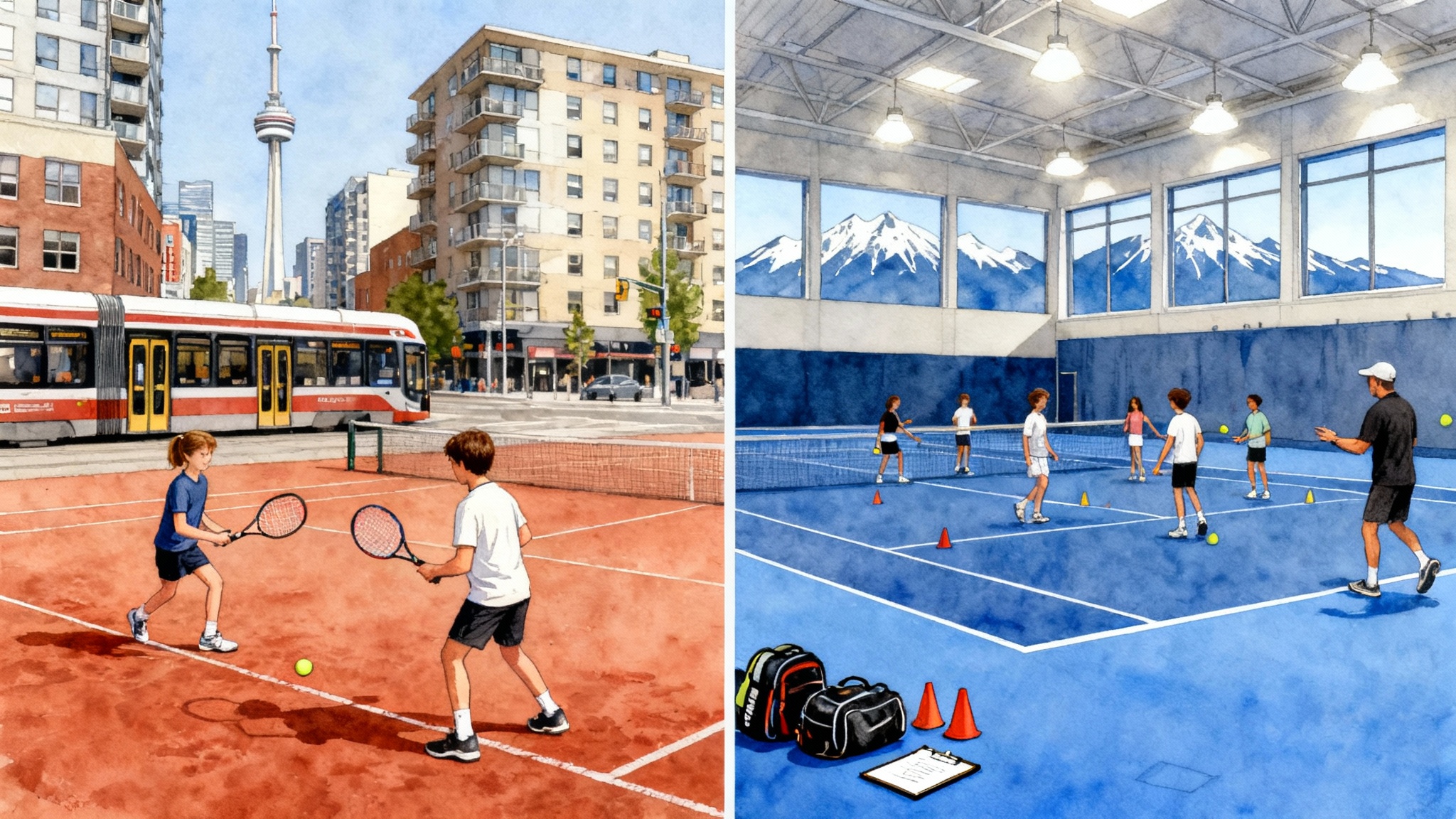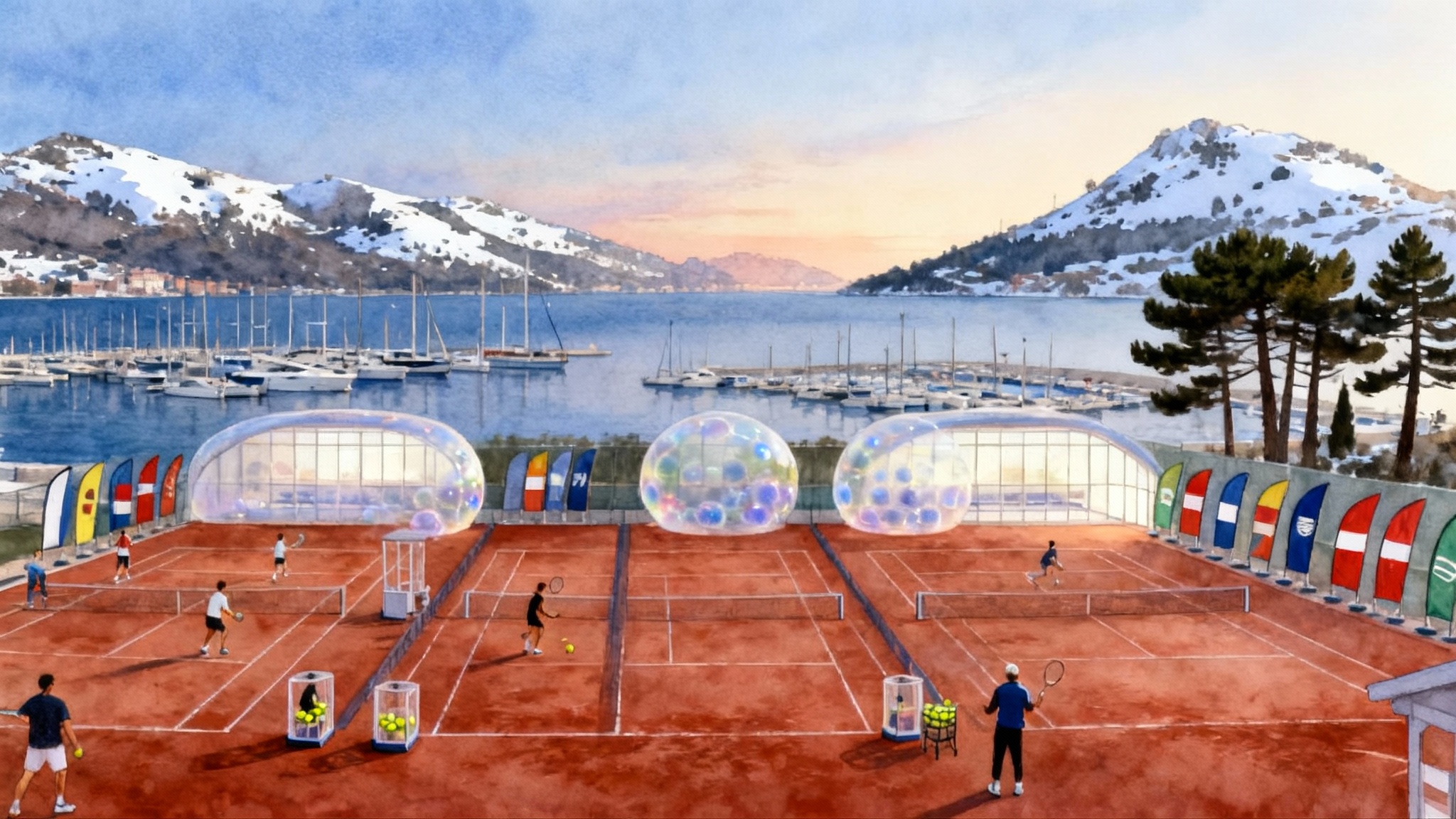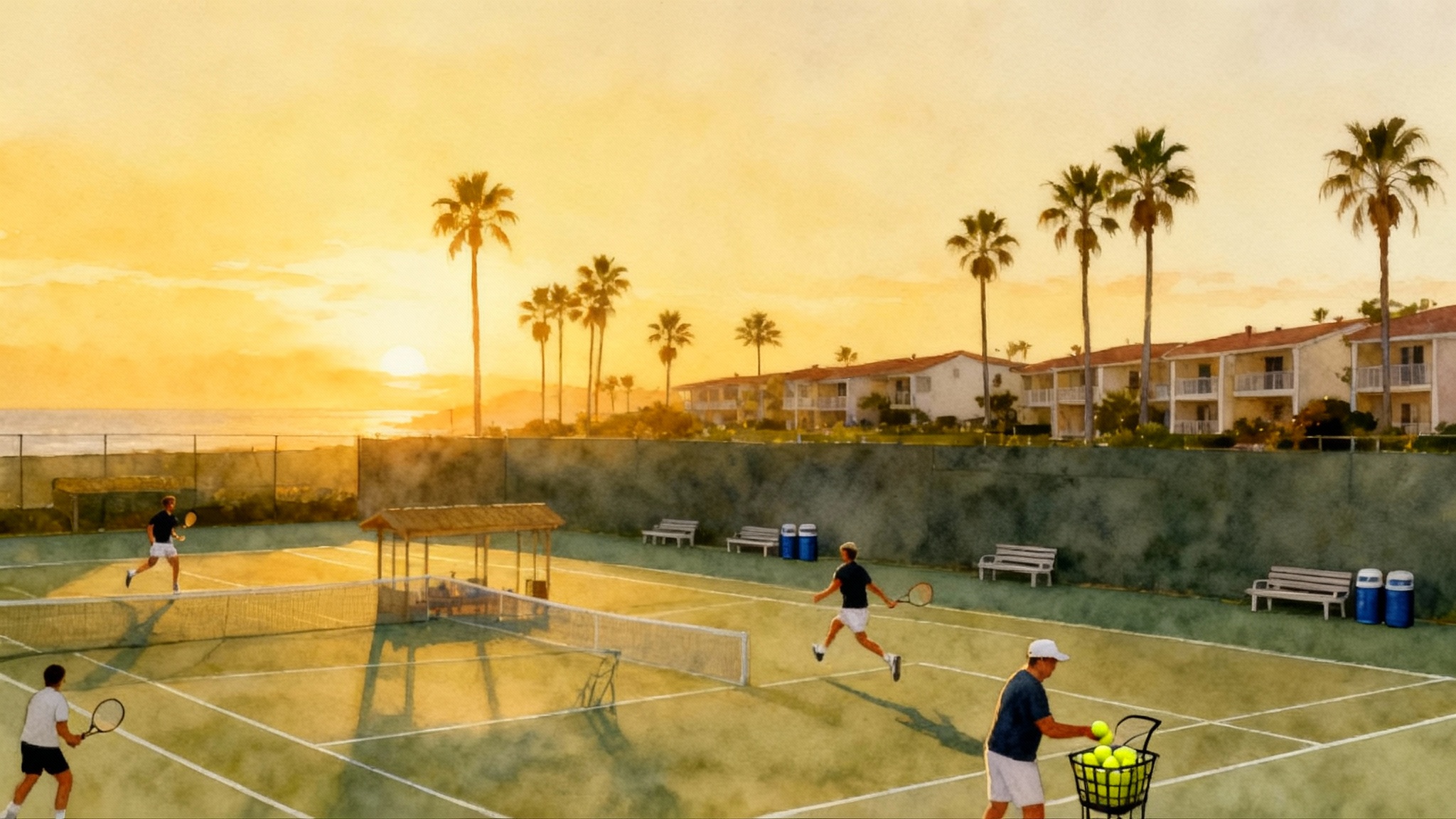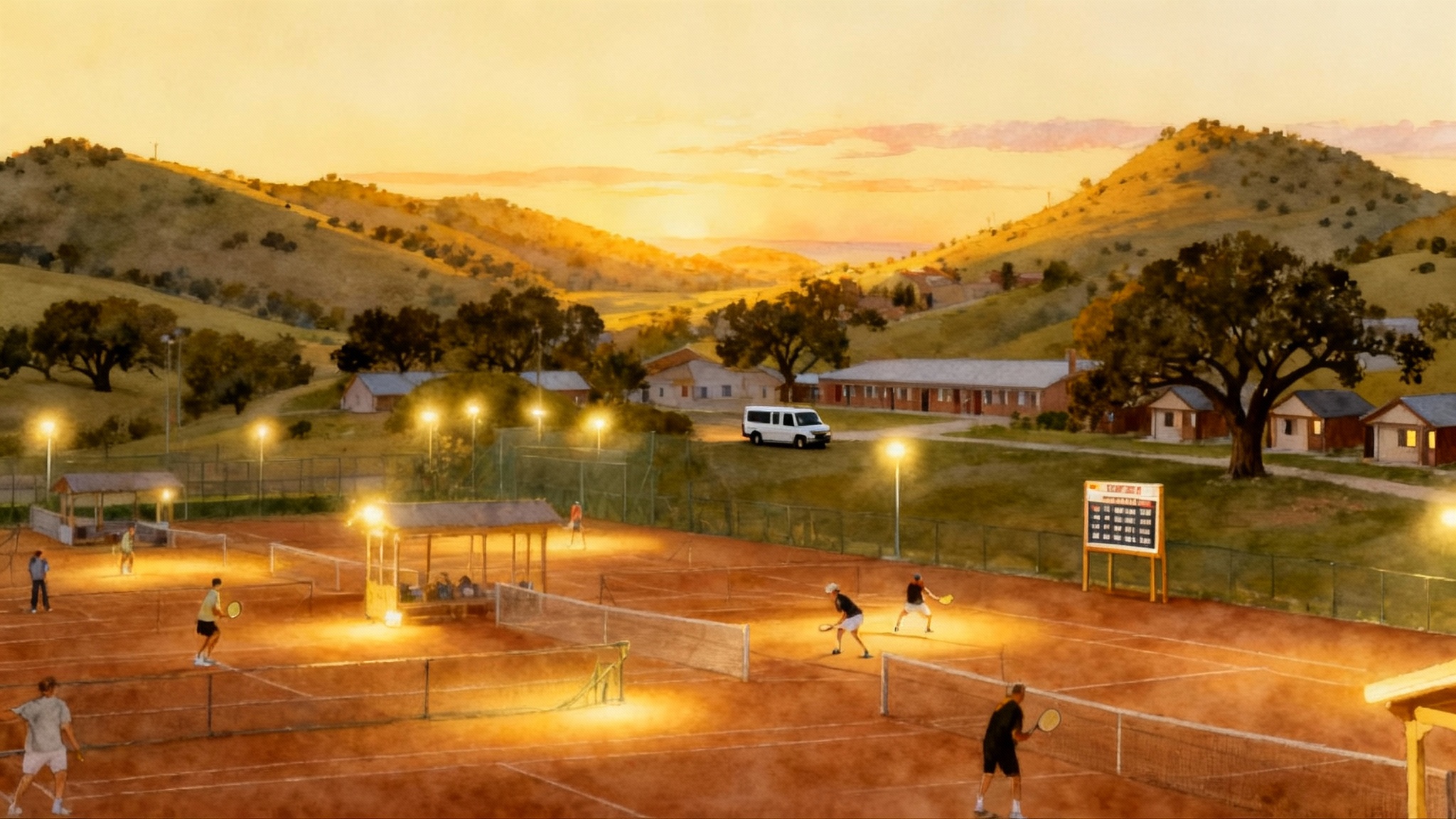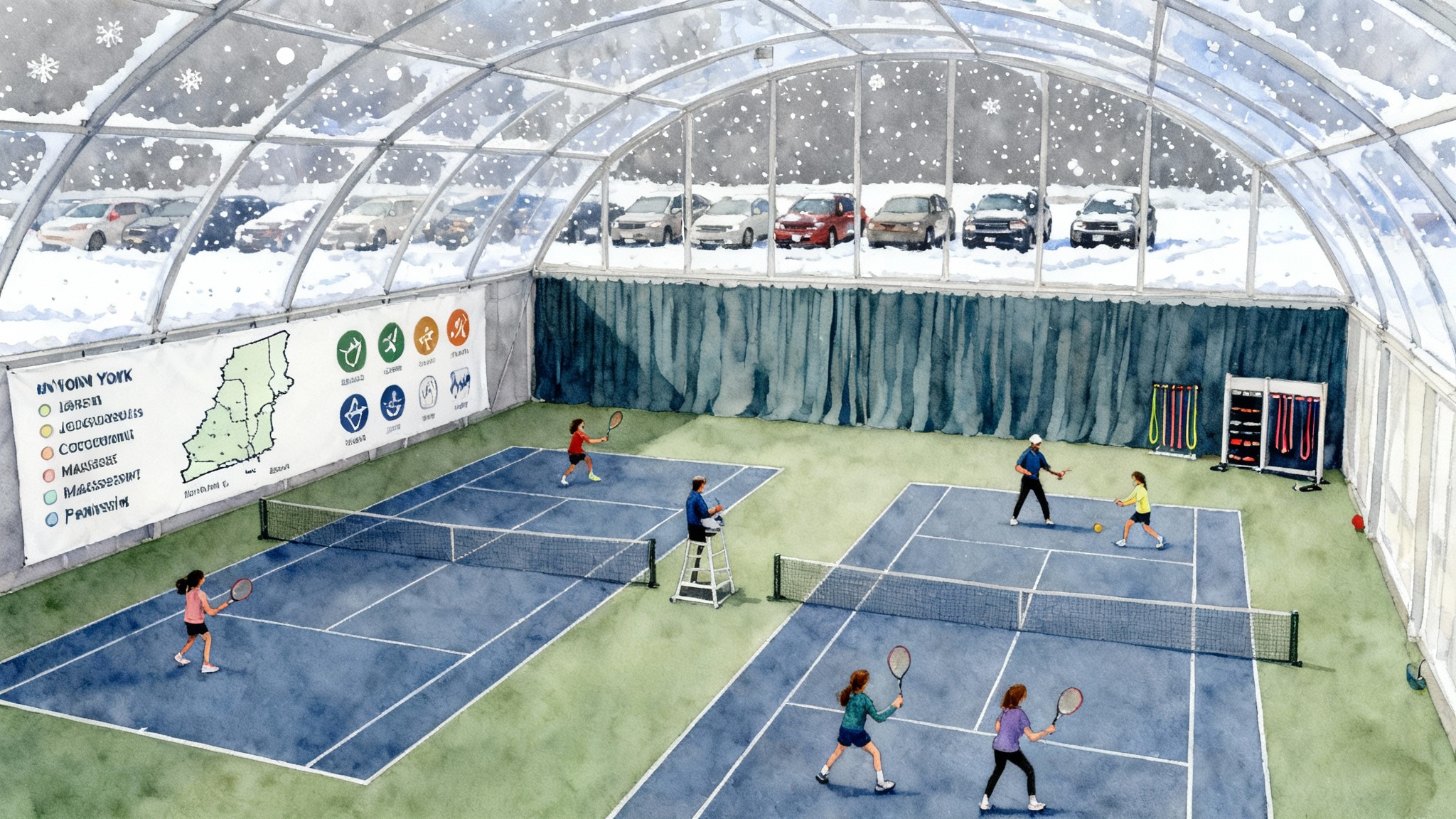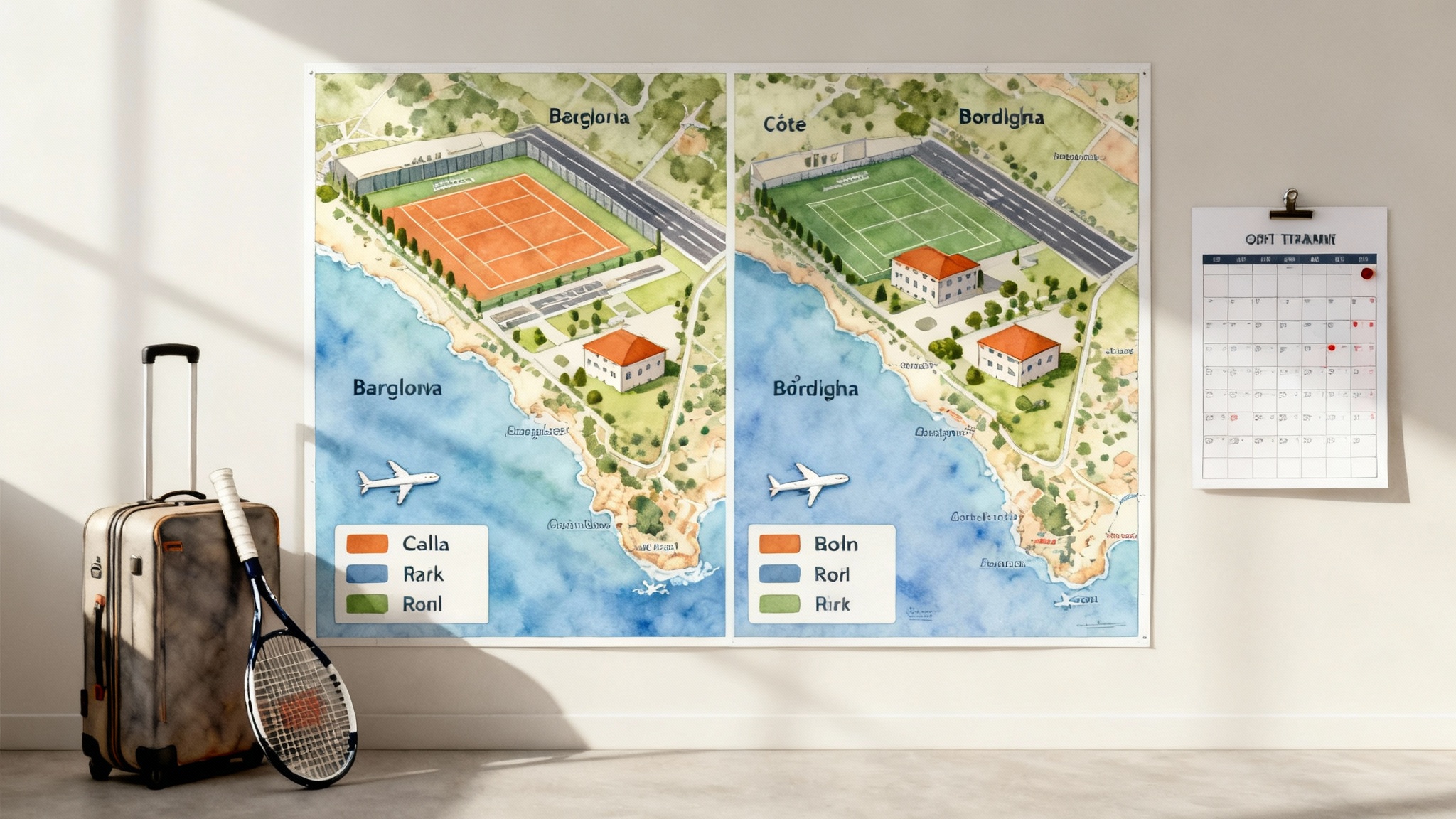Best Southern California Junior Tennis Academies 2025–2026 Guide
Where should your junior train in 2025–2026? We compare top programs across Los Angeles, Orange County, and San Diego on coaching ratios, philosophy, surfaces, academics, UTR and WTN growth, college placement, travel cadence, and annual costs.
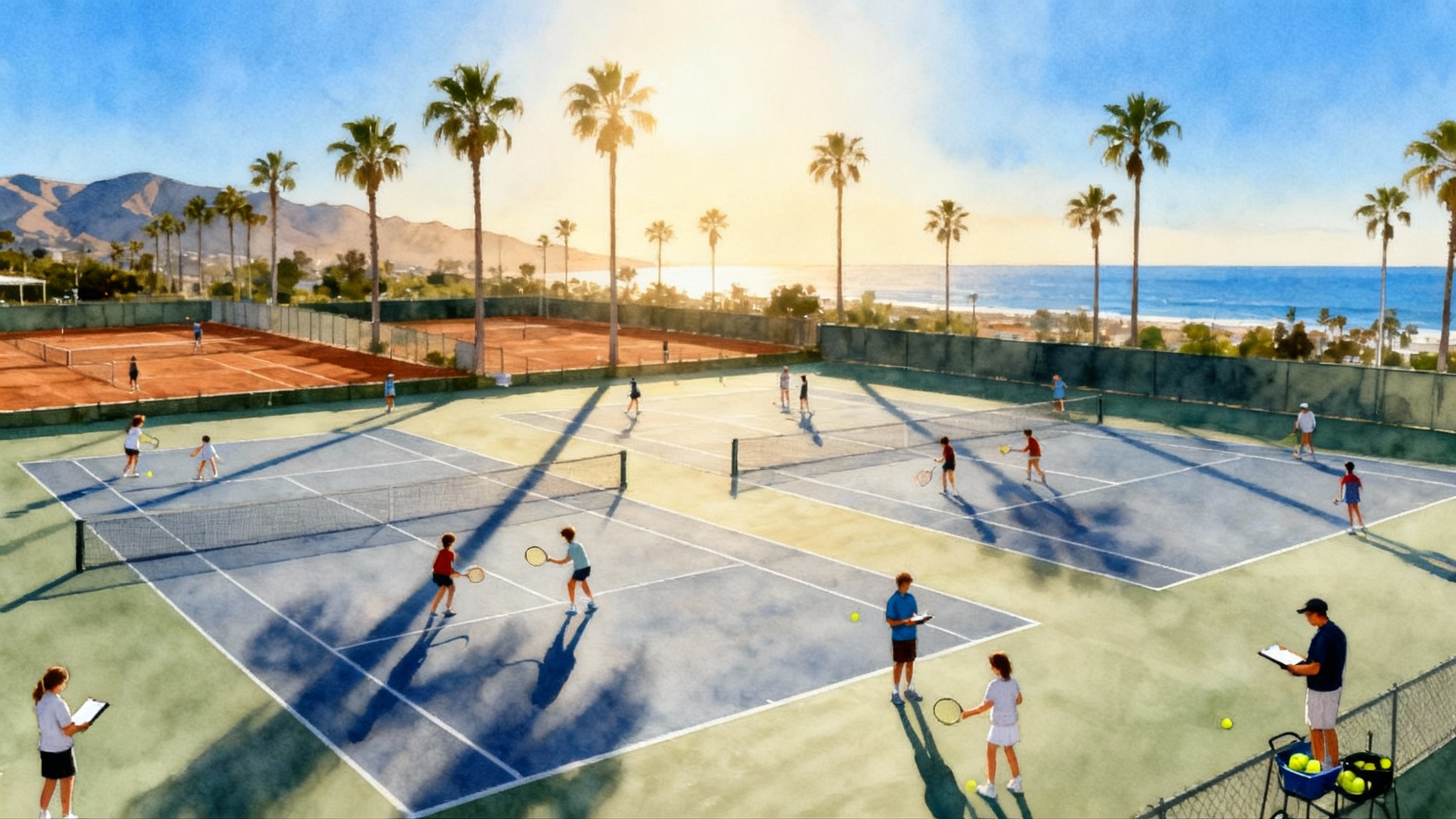
How to use this buyer’s guide
If you are a parent in Southern California, you have great weather, plenty of hard courts, and a maze of junior programs to choose from. This guide distills the details that actually shape development and budgets. We focus on what you can verify and feel on court: coaching ratios, the balance between technical work and live‑ball play, surfaces and any rare clay or indoor options, academic integration, how progress shows up in UTR and World Tennis Number, college placement patterns, tournament travel cadence, and what a realistic all‑in year costs.
Use the quick matrix below to compare two requested benchmarks, then keep reading for deep dives on Los Angeles, Ojai, and San Diego leaders, plus a simple 10 day testing plan you can run before you commit.
Quick matrix: Brymer Lewis vs. Giavara
| Category | Brymer Lewis Tennis Academy (Irvine) | Giavara Tennis (San Diego) |
|---|---|---|
| Training philosophy | High intensity blocks that target technical, tactical, mental, and physical pillars with frequent live‑ball and point play. Private lessons often used to tune mechanics. | Pro style drilling with strong fitness emphasis and frequent match play. The culture pushes players to compete weekly and learn by doing. |
| Coaching ratio | Published 5 to 1 player to coach groups for high intensity sessions. | Small group after school clinics; private lessons standard for mechanics. Group clinics priced per class. |
| Surfaces | Outdoor hard at Orange County Great Park and other Irvine venues. Clay available nearby at some partner clubs for occasional blocks. | Outdoor hard at Mission Bay base and San Diego sites; clay is uncommon and used mainly when traveling. |
| Indoor access | True indoor courts are scarce in Southern California; training runs outdoors year round with gym sessions on rainy days. | Same. Outdoor training year round with gym work as needed. |
| Academic integration | After school and day blocks. No resident school. Players remain in local schools or online programs. | ISPE certified with San Diego district high schools for early release that counts toward physical education. |
| UTR and WTN progression | Level based grouping and frequent point play make UTR and WTN movement visible over a season; families typically track ratings monthly. | Players are scheduled into events so ratings have regular data; tournament planning is part of the calendar. |
| College placement | Alumni list features top Southern California juniors who progressed to Division I programs and the pro tour. Families handle most recruiting with coach support. | |
| Tournament travel cadence | Weekly local Southern California events plus targeted sectional and national trips. Family led travel is common; coaches attend key events. | Local ladder of L7 to L3 plus national events; coaches frequently travel with players and advise on scheduling. |
| Published pricing | Pricing by inquiry; two hour high intensity blocks are typical of Orange County market rates. Private lessons priced separately. | As of October 2025: after school clinics listed at approximately 40 dollars per class; private lessons around 125 dollars per hour. |
| Estimated all in annual cost | Commuter model. Three 2 hour groups per week plus one private lesson and a normal SoCal tournament cadence projects to roughly 15,000 to 25,000 dollars depending on lesson volume and travel. | Commuter model. With similar training inputs and lower clinic unit price, a typical year projects to roughly 12,000 to 22,000 dollars depending on lessons and travel. |
For deeper context on these programs, read our Brymer Lewis Tennis Academy profile and the Giavara Tennis Academy overview.
Notes on the numbers
- Costs vary with session frequency, coach selection, and tournament travel. Think of the ranges as planning envelopes, not quotes. Confirm current pricing with each academy.
- Two rating systems matter for recruitment and seeding. UTR is widely used by coaches; the United States Tennis Association now uses World Tennis Number for selection and seeding.
The Southern California landscape in one picture
- Weather: You can train outdoors year round. That convenience saves indoor court fees and helps with repetition.
- Surfaces: Most courts are acrylic hard. True clay blocks are rare but valuable for footwork, patience, and point construction. Seek programs that add clay reps a few times each month, even if that means a short drive.
- Indoor courts: Aside from a few private bubbles and covered courts, full indoor complexes are essentially absent. Plan for outdoor scheduling and have a gym backup for heavy rain.
Los Angeles leaders to know
Jack Kramer Club High Performance, Rolling Hills Estates
- What stands out: A heritage high performance culture with level based groups organized by UTR bands. Membership is required, which buys facility access and predictable court time for training and match play. Advanced and Elite groups publish UTR thresholds and daily intensities, and there is a High Performance tier with small player caps for maximum ball volume and coaching contact.
- Why it matters: Level based cohorts keep matches tight. A 5.0 UTR player practicing daily with 7.0 to 8.0 peers sees more competitive points than in mixed open clinics. That accelerates WTN confidence and UTR reliability because you add frequent, meaningful results.
- Good fit for: Families who want a stable home club, like the South Bay location, and want match play plus strength and conditioning under one roof.
USTA Training Center West, Carson
- What stands out: A selective environment with 15 outdoor hard courts and four Har Tru clay courts, plus an on site strength and conditioning center. Programming serves aspiring juniors during the day with integration to physical training and periodized planning.
- Why it matters: Clay exposure is a differentiator in Southern California. Clay blocks build sliding, balance, and patience, and they diversify a junior’s point building toolkit. That shows up later in national events and on college trips to clay heavy regions.
- Good fit for: Select players who can be accepted into day training blocks and want occasional clay exposure without leaving Los Angeles.
Ojai’s boarding powerhouse
Weil Tennis Academy, Ojai
- What stands out: A true full time residential option in Southern California with on campus college preparatory academics and a long track record of sending seniors to strong NCAA programs. Weil lists integrated tuition, travel supervision options, and a separate college placement program fee for grade 11 and 12.
- Cost signal: Weil publishes comprehensive pricing for boarding, school, and optional tournament travel accounts. Review the current schedule before you budget. Start with the official page for details and totals: Weil 2025 tuition and fees.
- Why it matters: A boarding school model removes commute friction and locks in daily rhythm. If your player thrives with structure and wants college tennis, the bundled academics, supervised travel, and video supported recruiting help are valuable.
- Good fit for: Out of area families who want a California base, or local families seeking a boarding school environment with tennis at the center.
San Diego standouts
Barnes Tennis Center and the Steve Adamson Tennis Academy
- What stands out: A nonprofit hub that blends community access, high performance training, and an active tournament calendar. A youth underwriting initiative has removed entry fees for entry level junior tournaments in San Diego, making the first rungs of competition more accessible.
- Why it matters: More matches at the right level increase both confidence and data for ratings. Free or subsidized entries reduce the cost barrier so you can compete twice a month instead of once.
- Good fit for: Families who want a mission driven center with deep junior ladders and staff who know the college pathway.
Giavara Tennis, Mission Bay
- What stands out: ISPE certification allows early release from San Diego district high schools so after school training counts as physical education. Pricing is visible and straightforward, and private coaching is available from the head coaches. The staff travels with players and prioritizes fitness.
- Why it matters: If your player attends a traditional high school, ISPE avoids schedule friction and ensures training consistency during the week. The fitness culture suits players who need to add strength and movement quality.
- Good fit for: San Diego families seeking a flexible commuter program with clear pricing and tournament support.
Orange County choices beyond the matrix
- Advantage Tennis Academy, Irvine: A long running high performance program with residential and after school options that trains at a large multi surface club. Families who want a boarding light model without leaving Orange County often start their search here.
- Racquet Club of Irvine, Irvine: A private club with both hard and Har Tru courts. For families building a home base, clay options one or two days per week can round out a hard court heavy routine.
- Orange County Great Park, Irvine: A massive public complex with 25 lighted hard courts, including a championship court. City run junior programs and independent academies share the site. It offers scale for match play and tournament hosting.
What the surfaces really mean for development
- Hard court every day builds first strike skills and quicker finishes. Juniors learn to take time away and to end at the net after a heavy approach.
- Clay court blocks build patience, defensive sliding, and depth control. Even one or two clay sessions per month rewires point construction and increases rally tolerance. If your home program lacks clay, schedule day trips for targeted footwork and pattern work.
- Indoor scarcity is not a weakness here. Southern California’s weather gives you daily reps without indoor fees. The tradeoff is learning to manage sun, wind, and heat. Good programs train those variables, not just strokes.
Understanding UTR and World Tennis Number
- Why UTR shows up in this guide: College coaches and tournament directors use UTR to band levels and spot growth. It updates with match results and weights opponent strength and score lines.
- Why World Tennis Number matters now: The United States Tennis Association has adopted WTN for selection and seeding. It is a 40 to 1 scale that updates weekly, which means consistent match play moves the needle in near real time. Read the USTA explainer for details in the ITF World Tennis Number overview.
- How to use both: Track one simple goal per month. For example, schedule four verified matches in the correct band, aim for two results inside your GameZone, and review patterns after each event. For recruiting next steps, see our college tennis recruiting roadmap.
What families actually spend in a year
Think in buckets. The numbers below are real planning envelopes for Southern California in 2025–2026. Replace the unit prices with quotes from your short list.
- Training time
- Group clinics: 50 to 80 dollars per 2 hour session in Orange County and Los Angeles. San Diego can price lower for group blocks. Three groups per week for 40 weeks lands between 6,000 and 9,600 dollars.
- Private lessons: 100 to 150 dollars per hour. One weekly lesson for 40 weeks is 4,000 to 6,000 dollars.
- Strength and conditioning: 75 to 125 dollars per session if billed separately. One session per week for 30 weeks is 2,250 to 3,750 dollars.
- Competition
- Local entry fees: 40 to 90 dollars per event, two events per month for 10 months is 800 to 1,800 dollars.
- Travel blocks: Two national trips at 1,200 to 2,000 dollars each for flights, hotel, and coach presence if applicable.
- Gear and stringing
- Two to three frames, strings, shoes, grips, and bags. A realistic annual gear budget is 1,000 to 2,000 dollars, more for heavy string breakers.
Commuter total: 12,000 to 25,000 dollars per year, with the biggest swing driven by lesson volume and travel.
Boarding school total: 60,000 to 75,000 dollars for a full year when you include tuition, room and board, school fees, and the academy’s supervised tournament travel account. Always verify current fee schedules with the school.
A 10 day testing plan before you commit
You do not need six months to know if a program fits. You need 10 intentional days.
- Day 1: Define the job. Write one sentence that describes why you are changing programs. For example, improve second serve plus one and movement efficiency by spring.
- Days 2 to 3: Watch before you join. Observe two different groups. Count player to coach ratio, live‑ball minutes per hour, and total point starts. If you cannot get these numbers while watching, the session is not specific enough.
- Day 4: Trial practice. Ask for a trial in the cohort that matches your player’s UTR or WTN band. Confirm who will coach them if they attend three days per week.
- Day 5: Private lesson. Book one private with the coach who will manage mechanics. Ask them to explain the top two technical priorities and how they will measure them.
- Day 6: Conditioning screen. Request a simple movement baseline: 5 10 5 shuttle, medicine ball throw, and timed cross court recovery pattern. Save the numbers.
- Day 7: Match play audit. Play one verified match against a peer inside the GameZone. Review serve plus one, rally tolerance, and conversion on short balls.
- Day 8: Academic fit. If you need ISPE or flexible school hours, ask for the workflow and who handles forms. If you need boarding, ask how classes and fitness are scheduled around doubles blocks and travel.
- Day 9: Budget check. Build a simple 12 month plan. Lock in group days, private lesson cadence, travel blocks, and gear. Compare programs using the same calendar so the cost comparison is apples to apples.
- Day 10: Decision. Choose the place where the coaching is specific, the cohorts are the right level, and the calendar fits your life. Ask for a 90 day review date now.
Bottom line
The best junior academy for your family is the one that puts your player in the right cohort, gives them enough live‑ball and match reps to move UTR and WTN, and fits the school and travel calendar you can sustain. In Los Angeles, the Jack Kramer Club stands out for level based intensity and a complete club ecosystem. In Ojai, Weil provides the clarity of a boarding school pathway and transparent fees. In San Diego, Barnes and Giavara give you tournament heavy calendars and accessible pricing. Start with a 10 day test, track the numbers that matter, and buy the plan you can run all year.
